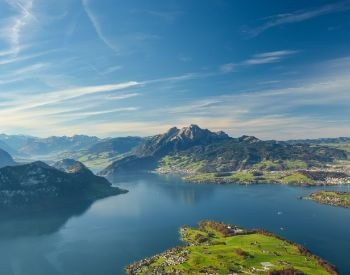
This web page contains lake facts for kids and is an excellent resource for anyone of any age looking to learn about these sources of freshwater. Our goal is to provide you with accurate, up to date facts about lakes. In addition to facts about lakes, we provide additional resources to help you with your research on these bodies of water.
The lake facts below will help you learn about lakes, how lakes are created, what species live in lakes, what are some of the largest lakes in the world and other lake related facts. We hope these lake facts are interesting and help you learn more about this water source on our planet.
If any of the below lake facts are inaccurate, please contact us and let us know.
25 Lake Facts for Kids
- A lake is a body of water that that is surrounded by land.
- Natural lakes are fed by rivers, streams or precipitation runoff.
- Lakes are important both for economical value and recreational value.
- Lakes are home to wide range of fish and aquatic plants.
- Lakes are typically filled with freshwater, but there are some lakes that are saltwater.
- An example of a lake with freshwater is Lake Michigan in the Midwest United States, North America.
- An example of a lake with saltwater the Great Salt Lake in Utah, United States, North America.
- The term lake and sea are sometimes used to define the same body of water, but they are different. A sea is a body of water that is open to the ocean, while a lake is surrounded by land.
- An example of a lake being called a sea is the Dead Sea in the Middle East.
- The depth and water volume of a lake can change greatly throughout the seasons.
- A manmade lake or artificial lake is a body of water created by humans and typically called a reservoir.
- Reservoirs are used by humans as a source of drinking water, power generation and/or recreational activities.
- Droughts and human activity have caused some lakes to dry up and disappear forever.
- Lake Chad was one of the largest lakes in Africa. However, between 1963 and 1998 activities by humans caused Lake Chad to shrink up to 95%.
- The largest freshwater lake in the world by surface area is Lake Superior.
- Lake Superior covers around 31,700 square miles.
- The largest freshwater lake in the world by volume is Lake Baikal in Siberia, Russia.
- Lake Baikal holds around 5,670 cubic miles of water.
- The largest freshwater lake in the world by length is Lake Tanganyika in Tanzania, Africa.
- Lake Tanganyika has a length of 410 miles.
- The largest group of freshwater lakes in the world is the Great Lakes in North America.
- Collectively, the Great Lakes cover 94,250 square miles.
- Lakes that are created by volcanic activity are called volcanic crater lakes. An example of a volcanic crater lake is Crater Lake in Oregon, USA
- Lakes that have been around for a very long time are called ancient lakes. An example of an ancient lake is Lake Tahoe, which is around two million years old.
- Lakes were discovered on Titan, Saturn’s largest moon. The Cassini–Huygens spacecraft took photographs of lakes containing liquid ethane on the surface of Titan.
Pictures of Lakes



Additional Resources on Lakes
- About Lakes – Learn more about lakes and how they form on the National Geographic website.
- About the Great Lakes – Discover facts and stats about the biggest lakes in North America, the Great Lakes, on the NOAA website.
- National Lake Assessment – Find information on the quality of lakes in the United States on the EPA website.
- Lake (Water) – Wikipedia – Explore the Wikipedia entry on lakes to learn more about this type of water body.
